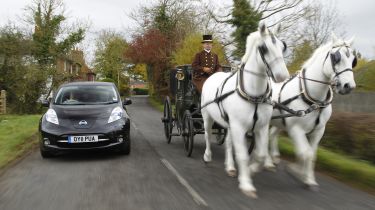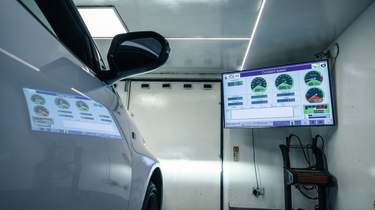What is horsepower? Your car’s BHP explained
Horsepower plays a big role in a car’s performance, but what does it actually mean?

Whether you’ve been checking out the latest Carbuyer reviews, comparing car specs in manufacturer brochures or simply chatting about cars with colleagues, you can’t have missed brake horsepower (bhp).
Brake horsepower is one of the most commonly used metrics when we talk about cars, providing an accurate measurement of how powerful an engine is. It’s not the only way to measure engine power, but it’s one of the oldest, having been invented in the 18th century by the famous engineer James Watt, well before anyone had even dreamed of the motor car.
Well over 200 years later we’re still using horsepower, although some manufacturers have adopted other units, too. You may find engine power listed as brake horsepower (bhp), kilowatts (kW) or metric horsepower (PS or HP) – we’ll explain the differences below.
Horsepower isn’t the only important measurement you need to think about, though. Engine torque can have just as big an impact on how spritely your car feels from behind the wheel, so it’s worth understanding that measurement, too.
What is power?
Before we dive into horsepower, it’s important to understand what ‘power’ actually is. Power is defined as the rate at which ‘work’ is done, or in other words, it’s a measurement of how much energy can be transferred over a given time.

For a car, a more powerful engine can transfer the energy stored in the fuel into forward motion at a faster rate than a less powerful engine. The quicker you can convert this energy, the more powerful your engine.
In applications outside of the motor industry, power is commonly measured in watts (W). You’ll have come across watts when shopping for electronic appliances, but it’s technically measuring the same thing as horsepower – a 60W lightbulb is equivalent to 0.08bhp, if you’re interested.
Ok, but what is brake horsepower?
So we know power is a measurement of how much energy the engine can convert in a given time, but where do brakes and horses come into things?
One horsepower is an arbitrary unit equivalent to approximately 745.7W. It was defined by engineer James Watt as the power needed to lift 550lbs one foot off the ground in one second. This helped him to compare the power of a horse against the new-fangled steam engines that were becoming popular in the 18th century.
That arbitrary measurement just happened to stick. While it’s not a particularly useful measurement in isolation, it can be used to compare the power outputs of two engines.

So what about the ‘brake’ bit? This refers to the way in which the engine’s power is measured. Brake horsepower is the figure arrived at once the losses from friction have been accounted for, so opposite and equal to the amount of ‘braking’ effort you’d have to apply (on top of the built-in braking effect of that internal friction) to stop the engine turning on a test bench. Horsepower measures the engine’s power without taking into account the friction losses, so hp is always slightly higher than bhp.
What about metric horsepower (PS) and kilowatts (kW)?
If that wasn’t confusing enough already, there are other units to worry about these days. First up is Pferdestärke (literally, the German for ‘horsepower’) or PS, which is especially popular – unsurprisingly – among German and German-owned brands. This is also known as metric or DIN horsepower, and you’ll sometimes see it abbreviated to HP.
It’s a very similar measurement to bhp, but it’s calculated using metric units rather than imperial units. It’s defined as the power needed to lift 75kg one metre off the ground in one second. One PS is equal to 0.986bhp, so 100PS is the equivalent of 98.6bhp.
Kilowatts (kW) is a metric measure of power that’s become more and more commonly quoted by manufacturers. It’s the same unit as the watts (W) you’ll find on a lightbulb, but the ‘kilo’ bit means ‘1000’. One bhp is equal to 0.7457kW, meaning the kW figure is always lower than the bhp figure.
What does that power figure mean?
The power figure that’s quoted is always the maximum power the engine can produce – usually at a specific amount of revs per minute (rpm). An engine will very rarely (if ever) develop its maximum power across the full rev range.
Generally, more horsepower results in a faster car, although you have to factor in variables like the weight of the car and its gearing, too.
Hopefully, this will help you navigate the minefield of jargon that is brake horsepower, if you’re still flummoxed by the concept of torque, click here to find out more.
Most Popular
Tips & advice

Car dashboard warning lights: what does each symbol mean?

Electric car charging stations: public networks, charger types, apps and maps





